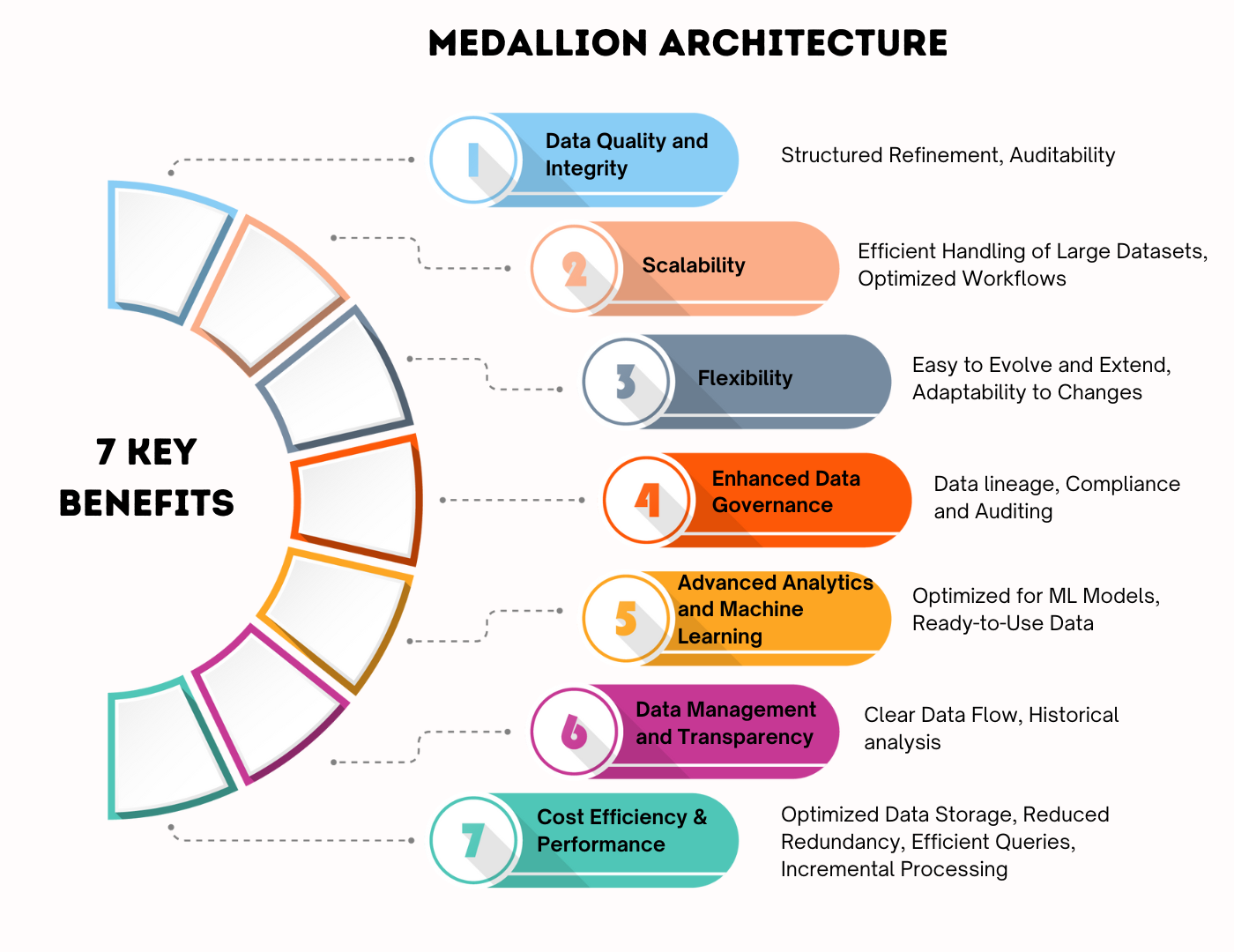Introduction
In the world of continuously evolving data management or data engineering, there are many ways to structure data and govern data flow. Medallion Architecture, a data design pattern first coined by Databricks, organizes data into 3 distinct layers in a Lakehouse, the layers known as Bronze (raw), Silver (validate) and Gold (enrich).
A quick summary:
Bronze Layer: Used to hold raw data. Batch processes and Real-time streams are used to ingest data.
Silver Layer: Holds cleansed and standardized data
Gold Layer: Holds curated, enriched aggregate data for consumption by business analysts and ML processes.
These three layers together improve data quality and overall structure and do so incrementally and progressively. In this blog, we will see what the key benefits of Medallion Architecture are.
Key Benefits of Medallion Architecture

By adopting Medallion Architecture, organizations provide powerful data frameworks especially in modern data lakes and cloud-based data platforms. Significant key benefits include:
1. Data Quality and Integrity – Data is well structured, refined and deduped by incrementally progressing data through Bronze layer, Silver layer and Gold layer. The architecture guarantees atomicity, consistency, isolation, and durability as the data is processed through different layers.
2. Scalability – Scalability is achieved by efficient querying of Large Datasets and Optimized Workflows with distributed frameworks (e.g., Apache Spark, Databricks).
3. Flexibility – Structure enables easy remodeling to accommodate new data sources or extend existing data sources. Each independent layer makes adaptability easier. Since raw data is preserved in Bronze layer, it helps to recreate downstream data in Silver & Gold layer when business needs are changed.
4. Enhanced Data Governance – It has a clearly defined end-to-end data lineage view making it easier to audit and ensure data integrity. High quality data is easily accessible while ensuring compliance and auditing.
5. Simplified Data Management and Transparency – The three layers provides a clear data flow and retains all historical data. This gives an excellent time travel view, simplifying reprocessing and auditing.
6. Facilitates Advanced Analytics and Machine Learning – Gold layer provides optimized Ready-to-Use Data for ML Models. Some customers create multiple gold layers to help meet different business needs.
7. Cost Efficiency & Improved Performance – While raw data is present only in Bronze layer, only standardized and curated data is progressed to Silver and Gold layer which results in optimized storage costs. Performance is increased because of focused and less redundant data and queries become efficient. The incremental process helps in faster ETL processes and better utilization of system resources.
Conclusion
Medallion Architecture provides reliable, scalable, efficient data with business enriched actionable and valuable insights. It is also referred to as multi-hop architecture. It must be noted Medallion Architecture does not replace other dimensional modeling techniques, rather is a data design pattern that results in a well-governed holistic view of enterprise data.
If you want to learn more about Databricks, please do not hesitate to reach out to me either on LinkedIn or Contact Us form on the website.

